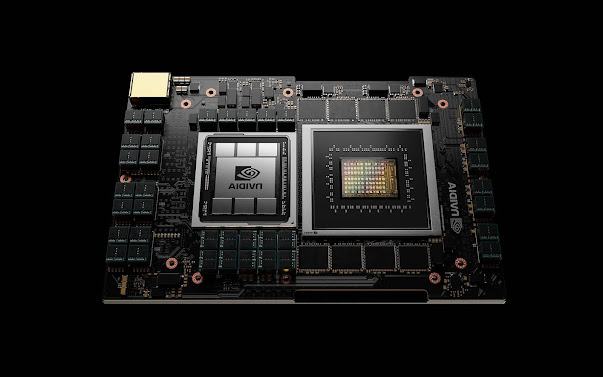Nvidia claims to be working on a whole range of Arm CPUs.
Nvidia CEO Jensen Huang disclosed on the firm's earnings call tonight that the business still has large plans to establish a broad portfolio of Arm-based CPUs for a wide range of applications ranging from the data center to robotics, despite having to abandon its plans to purchase Arm.
The Grace CPU will be delivered in the first half of 2023, according to Nvidia, but it will only be the beginning of the company's lengthy CPU journey. According to Huang, the business has a 20-year license for Arm's design and will utilize it to produce CPUs for a broad range of applications, from small SoCs for robots to high-end processors for supercomputers.
With a 20-year Arm Architecture license, big CPU plans are in the works.
"We're on schedule to introduce our Arm-based Grace CPU addressing massive AI and HPC workloads in the first part of next year," said Jensen Huang, Nvidia's CEO, during a conference call with financial analysts and investors. "Arm's IP is available to us under a 20-year architectural license, giving us the complete range of alternatives across technologies and industries."
Gaming and professional graphics (which includes the GeForce Now remote gaming service), AI/HPC, data center, and automotive are Nvidia's four main businesses. With CPUs based on its own unique Arm general-purpose cores, Nvidia claims it can supply optimal platforms for all of these categories. As a result, Nvidia intends to provide a variety of Arm-based CPUs for various purposes.
"We'll be releasing a slew of intriguing CPUs in the coming months, and Grace is just the beginning. Beyond that, you're going to see a lot of them "Huang stated. "We enjoy seeing CPU footprints expand, and we're ecstatic to see Arm expanding into robotics, autonomous cars, cloud computing, and supercomputing. Nvidia Arm CPUs will have access to the whole Nvidia accelerated computing platform."
Arm Cores Designed for Custom CPUs
Nvidia's multi-year Arm architectural licensing allows it to create highly customized Arm-based cores for a wide range of applications, similar to what Apple does with its A-series SoCs for smartphones and tablets and M-series CPUs for Mac desktops. However, whereas Apple does not appear to be interested in data center or supercomputer processors (at least, we are unaware of such intentions), Nvidia wants a top-to-bottom Arm chip family with its own cores.
Nvidia believes that as more applications embrace artificial intelligence, its CPU initiatives will add value since the business will be able to provide vertically integrated platforms for a variety of new applications, including autonomous applications such as robots and cars.
"We have many Arm initiatives in the firm, ranging from connected form devices to robotics processors, such as the new Orin [SoC] that will be used in autonomous cars, industrial automation, and other applications," Huang stated. "You can expect us to work on a number of CPUs based on the Arm architecture. The success that Arm has had in hyperscalers and data centers is one of the things that has progressed beautifully over the last number of years. They were compelled to speed up the development of higher-end CPUs as a result."
To optimize revenue prospects and gross margins, it makes sense for Nvidia to create its own CPUs and datacenter-grade processors. However, because accelerated computing platforms are Nvidia's bread and butter, the company will continue to offer industry-standard x86 CPU platforms.
"Our approach is faster computing; ultimately, it is what we do for a livelihood," said Nvidia's CEO. "Across CPUs, GPUs, and DPUs, we will deliver on our three-chip approach." "We'll use the best CPU for the task, whether it's an x86 or an Arm processor." We will deliver the world's greatest computing platform, in collaboration with computer industry partners, to address the most pressing concerns of our day."


Post a Comment